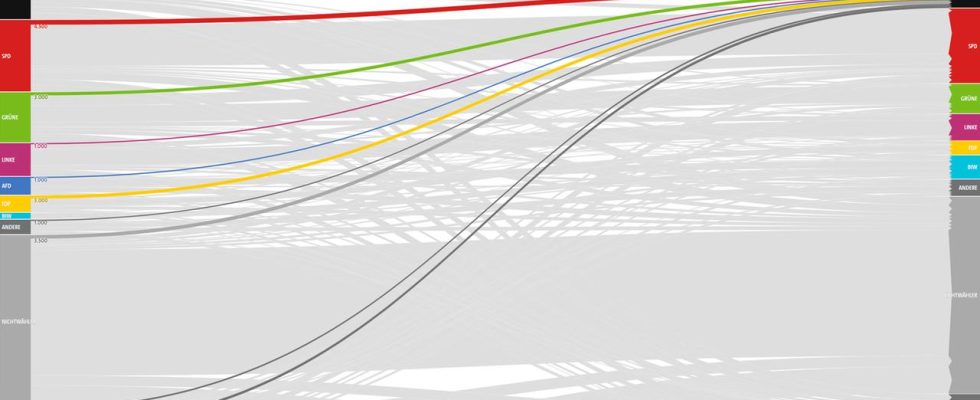interactive
Who gained voters from whom? Who benefited the most from other parties’ losses? To whom did parties lose former supporters? The interactive map of the provisional voter migration in the general election in Bremen.
hints about voter migration
The infratest dimap migration model estimates the extent of migration flows. The model takes survey results on current and previous voting decisions into account and estimates voter migration flows between the parties or “retention rates” for identical party elections. It also records changes in the composition of the electorate as a result of current and previous non-elections as well as changes of generation and location (first-time voters versus deceased voters or immigration versus emigration).
An electricity account is calculated for each party with the profits and losses between the parties, the interplay between voting participation and abstention and the change of generation or location. The assumptions about the size and voting behavior of the identified groups are based on representative election and population statistics, pre-election surveys, the exit poll and the official election results. The central results are the estimated balances for the exchange between the parties and with the non-voter camp.
For reasons of transparency, auxiliary estimates for the respective inflows and outflows as well as for those who have moved in and out are also published. In the voter migration, absolute numbers are used instead of percentages in order to better illustrate relations. When interpreting this, it must be taken into account that 500 eligible voters represent around one per mille of all eligible voters. The individual streams are rounded so that the marginal totals may differ from the official result.
The estimate of the migration flows changes several times during the election evening (intermediate results), because initially the representative surveys and finally the result of the preliminary count are included in the figures presented. After publication of the preliminary result, a final estimate will be made and published.
In the general election in Bremen, voter migration is calculated on the basis of voters – and not on the basis of votes. Individual voters are assigned to the party to which they gave all or most of the five votes. Due to the consideration of voters instead of votes and due to rounding, there are differences in the marginal totals compared to the official results.

